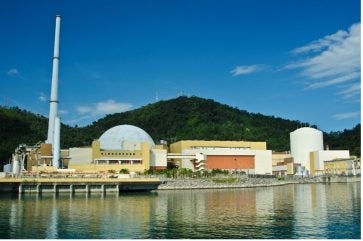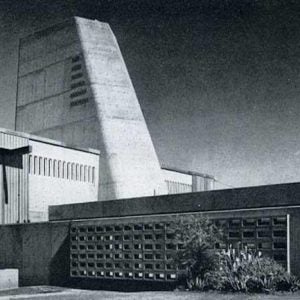
Brazilian nuclear utility Eletronuclear (part of state-owned power company Eletrobras) has won its appeal in the Rio de Janeiro Court of Justice, removing an embargo on work to complete unit 3 of the Angra NPP. Eletronuclear said that the court had agreed to lift the embargo and that it “reaffirms that it strictly follows all construction projects approved by the competent national and international bodies, guaranteeing the safety of the construction and future operation of the plant” and “reaffirms its commitment to maintaining an open dialogue with the City of Angra dos Reis to advance the company’s priority projects, which generate positive consequences for the entire local population”.
Angra NPP units 1&2 currently generate about 3% of Brazil’s electricity. Construction of Angra 3 with a Siemens/KWU 1,405 MWe pressurised water reactor began in 1984 but was suspended after two years. The project resumed in 2006 and first concrete was poured in 2010. But work stopped again in 2015 following allegations of corruption involving government contracts. The unit was then 65% complete.
In 2022, the newly appointed Eletronuclear President, Eduardo Grand Court, ordered construction to restart. However, in April 2023 the city government of Angra dos Reis ordered work to stop again. Mayor Fernando Jordão said he authorised the embargo “because Eletronuclear is executing a project that is not in accordance with what the municipality approved” including the promised payment of compensation. Eletronuclear said it was committed to reversing the suspension of work and was seeking a constructive dialogue with the city of Angra dos Reis to clarify outstanding issues.
Independent studies on the completion of Angra 3 were commissioned in 2019, during the government of Jair Bolsonaro, when the project was included in the Investment Partnerships Program (PPI). A first version was completed by National Bank for Economic & Social Development (BNDES – Banco Nacional de Desenvolvimento Econômico e Social) and delivered in November 2022. With the change of government in 2023, however, it was decided to review the studies, which are being conducted by Tractebel, part of the Engie group to evaluate the technical, economic and legal plausibility of the project.
The results will be reviewed by the Energy Research Company (EPE – Empresa de Pesquisa Energética), the Ministry of Mines & Energy and the National Energy Policy Council (CNPE – Conselho Nacional de Política Energética). which will be responsible for defining the concession and approving the tariff for the commercialisation of the energy generated by Angra 3. Eletronuclear said: “After this step, the company expects civil works to take off.”
In March 2024, Eletronuclear launched a public consultation on completion of Angra 3. It said the amount invested so far is BRL7.8bn ($1.5bn) and to complete the plant a further BRL20bn will be needed. Some 67% of the civil work has already been carried out.
In addition to its successful appeal in the court of Justice, Eletronuclear has terminated its contract with the Agis Consortium comprising three companies – Ferreira Guedes, Matricial and ADtranz – to carry out civil works within the scope of Angra 3’s Critical Line Acceleration Plan. The agreement was signed in February 2022. Eletronuclear said the decision to terminate the contract was the result of an extensive administrative process that proved the inadequate performance of the contracted project and the inability of the Consortium to achieve the levels of quality required for nuclear work.
Angra NPP said the Consortium had breached some clauses regarding the order of execution and the schedule of the works. A fine was imposed equivalent to 10% of the value of the contract along with a six-month suspension of bidding and inclusion in the National Register of Unlawful & Suspended Companies (CEIS – Cadastro Nacional de Empresas Inidôneas e Suspensas).
The Angra 3 Critical Line Acceleration Plan includes a series of activities aimed at accelerating the construction of the plant. These include completion of the concrete superstructure of the reactor building; closure of the steel containment dome; installation of the used fuel pool; and the installation of the polar bridge and semi-gantry crane.






